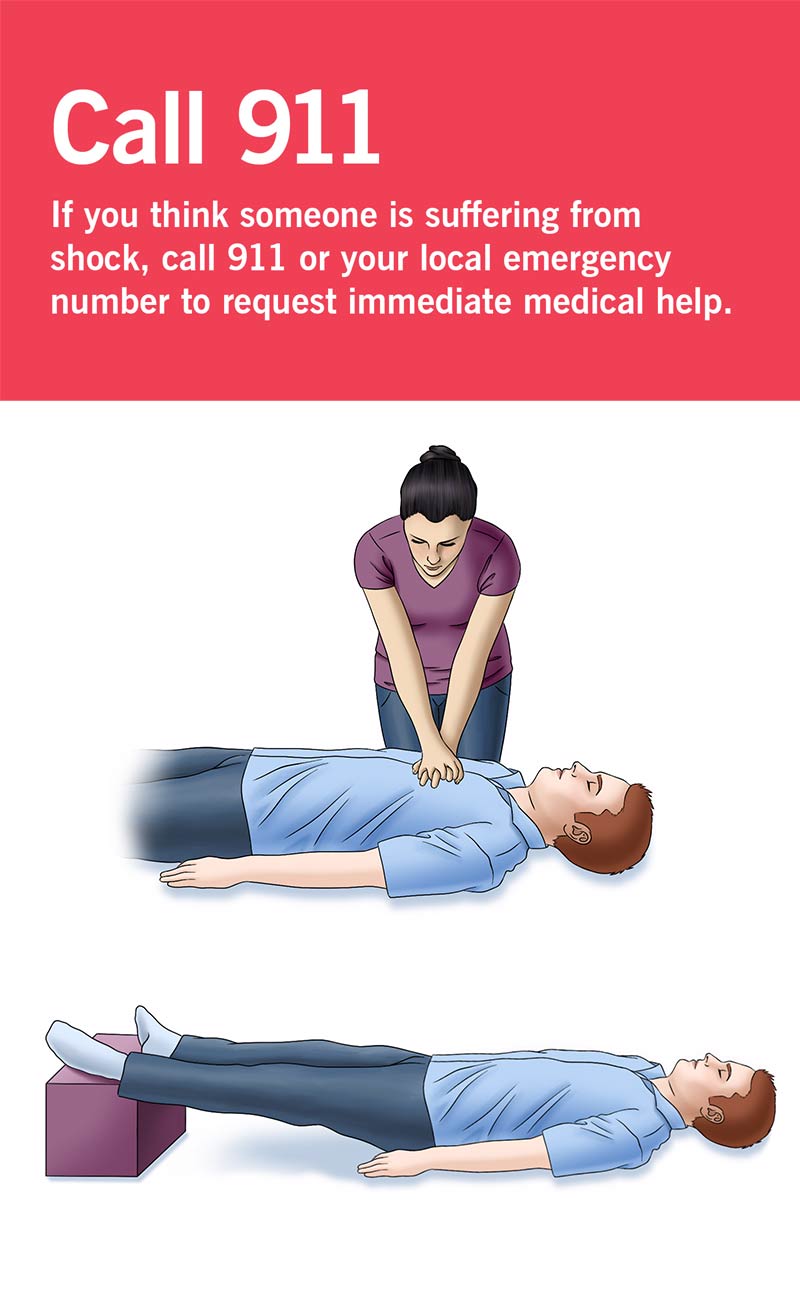Shock first aid treatment refers to lifesaving care you can provide for someone going into or already in shock. Shock makes your organ systems shut down due to a lack of blood flow and oxygen. The goal of shock first aid is to stabilize a person as much as possible and buy time until they can get professional medical care.
Advertisement
Cleveland Clinic is a non-profit academic medical center. Advertising on our site helps support our mission. We do not endorse non-Cleveland Clinic products or services. Policy

Shock first aid is lifesaving care that can help a person who’s in shock or at risk of going into it. Shock happens because of a widespread lack of oxygen in your body. Without oxygen, your body’s systems start shutting down. If they don’t get their oxygen supply back quickly enough, the affected cells will start dying. And if that lasts too long, it can cause permanent damage or even death.
Advertisement
Cleveland Clinic is a non-profit academic medical center. Advertising on our site helps support our mission. We do not endorse non-Cleveland Clinic products or services. Policy
IMPORTANT: Shock is a life-threatening medical emergency. It needs immediate medical care. If you suspect that you or someone you’re with is going into shock, call 911 (or your local emergency services number) immediately.
There are four main types of shock. The type you have can sometimes determine which shock first aid measures you need. The four types of shock are:
Advertisement
Sometimes, you can also have more than one of the above forms at the same time. Experts call that mixed shock.
People who are in shock or close to it can have the following symptoms:
If you think someone’s in shock, the very first thing you should do is make sure you’re both out of danger. If you’re not safe, move both of you to safety however you can.
Once you’re safe, get help. That means calling 911 or your local emergency services number, or sending someone else to get help. If there’s no one else to send for help, do what you can to help the person in shock first. Don’t leave them until they’re as stable as you can make them, and even then, only leave them as a last resort.
You should also remember:
Unless you’re a trained medical professional, you can’t diagnose shock yourself. That means you can only react to:
The treatments for shock can vary slightly depending on which type of shock you’re experiencing. But when someone’s unconscious, all shock treatments start with the ABCs. Those letters stand for:
It’s absolutely critical to confirm these in that order. That’s because you can’t survive more than a few minutes if you aren’t breathing, and you can’t breathe if your airway is blocked.
If the person is breathing, look for any potential threats to their circulation. If they have severe bleeding, try the following measures (if one doesn’t work, move on to the next):
Advertisement
If the person isn’t breathing, the circulation step often means starting CPR. But if the person has severe bleeding, you have to stop the bleeding immediately so they’ll have as much blood left in their body to circulate as possible. Once you stop the bleeding, you can then start CPR.
Keep doing CPR until you can get an automated external defibrillator (AED) and try to use it. If you don’t have or can’t use an AED, continue CPR until help arrives. Remember, CPR is very tiring. Swap out with others who can also do CPR when you need to rest.
Some other key actions you can take to help someone in shock or in danger of going into shock are:
Advertisement
If you’re with someone who could be going into shock, try to remain calm. Making sure that your surroundings are safe and calling for help are your top priorities. As you try to help them, focus on what they need and try to reassure and support them. Even seemingly minor things you do to support someone in shock can make a big difference.
Advertisement
Whether you need stitches, a broken bone set or think your appendix might be causing your abdominal pain, Cleveland Clinic’s emergency medicine team is here to help.

Last reviewed on 06/19/2025.
Learn more about the Health Library and our editorial process.